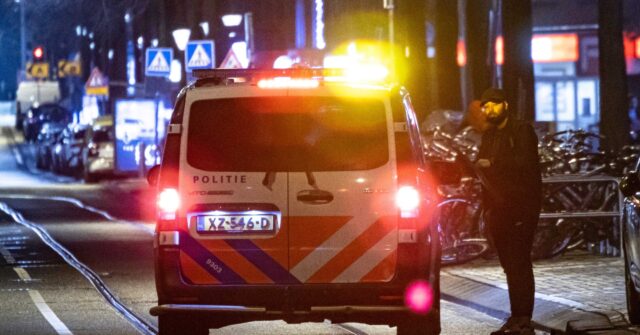Riots erupted in Amsterdam on Monday evening, triggered by a series of violent incidents that have heightened tensions in the city following a controversial Israeli soccer match. Hundreds of young men dressed in black took to the streets of the Nieuw-West borough, igniting chaos as they set fires, hurled rocks, and launched fireworks. This unrest came just days after an alarming event dubbed the “Jew hunt,” where individuals targeted Jewish fans of the Ajax soccer team after a match against Maccabi Tel Aviv. Videos circulating on social media depicted the rioters waving Palestinian flags and chanting anti-Semitic slurs, signifying a deeply polarized atmosphere in the city, which has recently seen rising anti-Israel sentiment.
The situation escalated as youth rioters targeted public transportation and vehicles, with reports indicating that rocks and heavy fireworks were used indiscriminately. One tram was set ablaze amidst the chaos, as the police responded to the burgeoning violence. The Nederlandse Omroep Stichting reported on the disruptive behavior of the crowds, emphasizing the need for emergency intervention to restore order. The Amsterdam police confirmed that they had made several arrests, although specific details regarding the number of apprehensions were not disclosed.
In the context of these riots, speculation has emerged regarding the identity of the rioters, with suggestions focusing on potential involvement from “Arab and North African gangs.” However, these claims remain unverified. These violent outbursts come on the heels of premeditated attacks against Israeli soccer supporters following the Ajax-Maccabi match, which left multiple individuals injured. Reports indicate that the violence was organized through pro-Palestinian group chats, demonstrating a troubling shift in community relations and calling into question the safety of individuals identified as Jews or Israeli in this increasingly charged environment.
Adding further complexity to the situation, some individuals sought to justify the violent attacks by pointing to earlier provocations from Maccabi supporters, including incidents of flag desecration and chants perceived as inflammatory. These developments reflect a broader narrative playing out in social media discussions, where attempts to rationalize or condemn behaviors are intertwined with deep-seated political and social grievances. Following the provocative incidents, anti-Israel activists aimed to stage a protest over the weekend; however, an emergency decree resulted in the demonstration’s ban, leading to confrontations with police and multiple arrests at Dam Square.
As tensions continued to rise, the police reported that five individuals had been arrested concerning the earlier attacks on Israeli supporters, suggesting that they were local residents. However, the authorities have not released specific details regarding their identities or backgrounds, leaving room for speculation about the makeup of the groups involved. This lack of clarity reflects a broader struggle within society to understand and address rising incidents of organized violence and hatred that target ethnic and religious groups.
In summary, Amsterdam finds itself grappling with violent unrest fueled by a confluence of political sentiment, identity politics, and social strife. The implications of these events extend beyond the immediate physical violence, raising questions about community cohesion, public safety, and the increasing polarization of societies in an age of heightened geopolitical tensions. As investigations continue and authorities work to restore order, the potential for further unrest looms, prompting a reflective reassessment of how diverse communities can navigate their differences amid escalating animosity.

